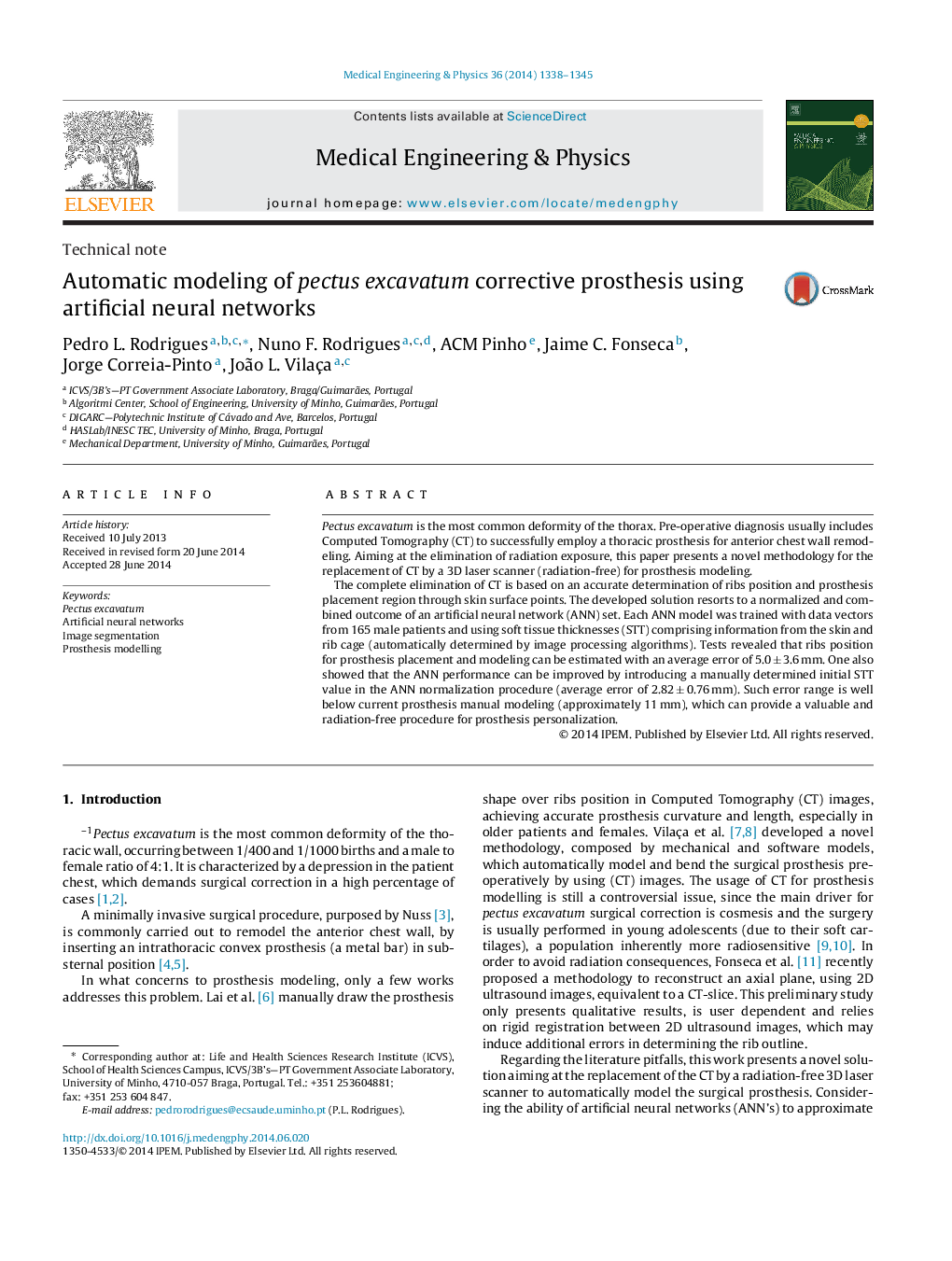| کد مقاله | کد نشریه | سال انتشار | مقاله انگلیسی | نسخه تمام متن |
|---|---|---|---|---|
| 875819 | 910810 | 2014 | 8 صفحه PDF | دانلود رایگان |
• Automatic surgical prosthesis modeling for pectus excavatum surgical correction without CT scan.
• Automatic algorithm for ribs position prediction through skin surface based on artificial neural networks (ANN) and image processing methods.
• ANN trained with soft tissue thicknesses along different orientations of the thoracic wall.
• Ribs position estimated with an average error less than 5 mm.
• Considerable step forward toward the total replacement of CT for prosthesis personalization.
Pectus excavatum is the most common deformity of the thorax. Pre-operative diagnosis usually includes Computed Tomography (CT) to successfully employ a thoracic prosthesis for anterior chest wall remodeling. Aiming at the elimination of radiation exposure, this paper presents a novel methodology for the replacement of CT by a 3D laser scanner (radiation-free) for prosthesis modeling.The complete elimination of CT is based on an accurate determination of ribs position and prosthesis placement region through skin surface points. The developed solution resorts to a normalized and combined outcome of an artificial neural network (ANN) set. Each ANN model was trained with data vectors from 165 male patients and using soft tissue thicknesses (STT) comprising information from the skin and rib cage (automatically determined by image processing algorithms). Tests revealed that ribs position for prosthesis placement and modeling can be estimated with an average error of 5.0 ± 3.6 mm. One also showed that the ANN performance can be improved by introducing a manually determined initial STT value in the ANN normalization procedure (average error of 2.82 ± 0.76 mm). Such error range is well below current prosthesis manual modeling (approximately 11 mm), which can provide a valuable and radiation-free procedure for prosthesis personalization.
Journal: Medical Engineering & Physics - Volume 36, Issue 10, October 2014, Pages 1338–1345
